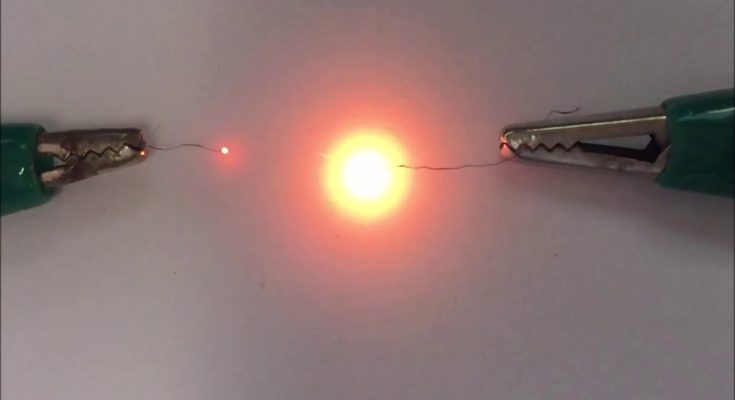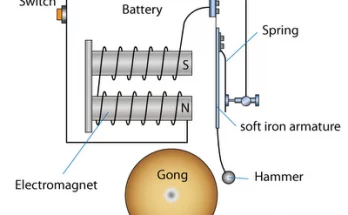Objective- This activity demonstrates how certain materials, like steel wool, can melt and break under large electric currents, helping students understand the principle behind electric fuses.
Concepts to Understand-
- Electric Fuses- Fuses are safety devices used in electric circuits. They are made of materials that melt and break easily when too much current flows through them, thus breaking the circuit and preventing potential hazards.
- Effect of High Current on Materials- Materials like steel wool can melt and break when a high current passes through them, showcasing the basic principle of how a fuse works.
Materials Needed-
- Battery of four cells
- Steel wool (thin strand)
- Electric circuit components (wires, switch)
- Board to mount the circuit
Steps to Follow-
Set Up the Circuit-
- Arrange the four cells in a battery formation and attach them to a board.
- Attach one end of the steel wool strand to one terminal of the battery.
- Connect a wire from the other terminal of the battery to one side of a switch.
- Attach another wire from the other side of the switch to the second end of the steel wool strand, completing the circuit.
- Ensure all connections are secure and the switch is in the ‘OFF’ position.
Conducting the Experiment-
- If there are any fans in the room, switch them off to avoid external influences.
- Turn the switch to the ‘ON’ position and observe the steel wool strand.
- Note whether the strand of steel wool melts and breaks.
Understanding the Results-
- Discuss why the steel wool melts and breaks when the circuit is complete and current flows through it.
- Relate this to how fuses work in protecting electrical circuits by breaking the circuit when too much current flows.
Concept Behind the Activity-
- The steel wool, representing the fuse material, has a certain capacity to withstand electric current. When the current exceeds this capacity, the steel wool heats up, melts, and breaks, thus stopping the flow of current.
- This illustrates how a fuse functions in real-life electrical circuits, providing safety by preventing excessive currents that can lead to overheating and potential fires.
Conclusion-
Through this activity, students learn about the safety mechanism of electric fuses in a simple and visual way. They understand how fuses protect electrical circuits by breaking the circuit when a current higher than what the circuit can safely handle flows through it. This principle is crucial for the safe operation of electrical systems in homes and various devices.
Also Check – Chapter 10: A Detailed Guide to “Electric Current and its Effects” Activities for Class 7 Students
Also Check- Electromagnets- A Guide for Upper Primary Students
Also Check- Chapter 10 – Electric Current and its Effects – 5 Worksheets Solved and Unsolved
Also Check- Electric Bell Diagram for Class 7 Science
Also Check- Rapid Revision – Class 7 Science- Chapter 14 – Electric Current and Its Effects
Also Check- Chapter 14- Electric Current and Its Effects-Class 7 science- Question and Answers
Also Check- Chapter 14- Electric Current and Its Effects–Class 7 science- Question and Answer -(Solved MCQs)
Also Check- NCERT Exemplar Solutions- Class 7 Science- Chapter 14 – Electric Current and Its Effects
Also Check- NCERT Solutions for Class 7 Science Chapter 14- Electric Current and its Effects
Also Check- Class 7 science -Chapter 14 – Electric Current and Its Effects- Complete Notes
Also Check – Electric Bell Working Mechanism Simplified for Students
Also Check- Batteries- The Powerhouses of Everyday Life – A Guide for Upper Primary Students

